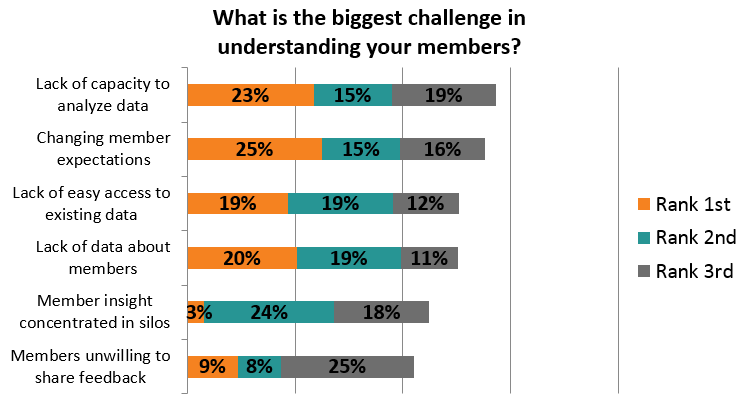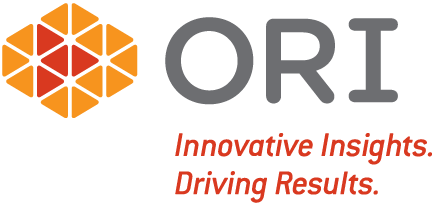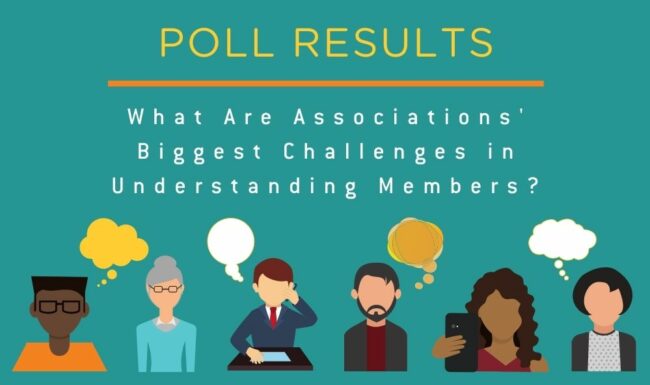The Results Are In: What Are Associations’ Biggest Challenges in Understanding Members?
For many associations, data can feel like a full-time job. (And for analysts like me, it is.) You collect data, cleanse data, scrutinize and analyze data, use data to build predictive models, interpret data to glean insights, build your strategy around data-driven decisions, eliminate or add programs based on data, plan events around data—the list goes on and on…
And for good reason; data is your window into understanding what your members want and need. Survey feedback, enrollment statistics, non-dues revenue, participation rates, readership numbers, and membership renewals are all data points that help inform strategic decisions and achieve your association’s mission. So, armed with this plethora of data, how well do associations understand their members?
Asking the Experts—ASAE Conference Attendees
Of course, the best data comes from the right target audience, so we asked the experts. Surrounded by association leaders and decision makers at the 2017 American Society of Association Executives (ASAE) Marketing, Membership, & Communications Conference (MMCC) in May and Annual Meeting & Exposition in August, we took the opportunity to ask attendees to share their top three challenges in understanding members.
We’ve tallied the collective votes, and it’s no surprise that data is a major challenge for associations. But what aspects of data are keeping associations from better understanding their members?
 Receiving the most votes overall (and nearly a quarter of the No. 1 votes) was a lack of capacity to analyze data. Coming in at a close second overall was changing member expectations, which actually received the most No. 1 votes and was therefore considered the biggest challenge for most association leaders.
Receiving the most votes overall (and nearly a quarter of the No. 1 votes) was a lack of capacity to analyze data. Coming in at a close second overall was changing member expectations, which actually received the most No. 1 votes and was therefore considered the biggest challenge for most association leaders.
This is not a surprising combination—and one that we encounter quite often with clients. Many associations struggle with finding the time to conduct data analysis as well as allocating resources to help maneuver the data challenges they inevitably uncover. This requires more than just technology—it demands analytical talent. Specifically, it requires resources who possess the ability to ask questions and identify patterns in different types of data, work comfortably with different tools/software, and apply diverse statistical methods to mine valuable insights and/or determine possible outcomes. Regardless of whether associations assign this task internally or outsource the function, the individual(s) involved must understand the business objectives related to the data analysis and have the capacity (both in terms of time and skill set) to undertake an ongoing analytical exercise that will provide high-value insights today and into the future as member expectations evolve.
Interestingly, tied for the third most common challenge in understanding members were a lack of easy access to existing data and lack of data about members. Both challenges received a fairly even number of votes across the board, with member data considered a slightly larger problem for most. These particular challenges are often big contributors to the first two—compounding the issue of trying to analyze what data you have and attempting to understand seemingly fleeting member expectations. Not having easy access to existing data is an issue rooted in having the right information but not being able to draw from it without extra time and hands. Or, equally as challenging, many associations simply do not have the necessary data.
Whether struggling to collect critical data or encountering difficulties accessing it, these challenges can prove to be your kryptonite in terms of truly understanding your members. Consider breaking down your data challenges and prioritizing which data gaps are most critical based on strategic business goals for the next six months. Once you can link the desired outcome to the data requirement, making the business case to either collect more data or allocate resources to mining what you already have can be a much easier task.












